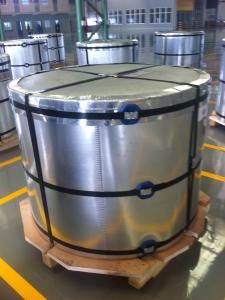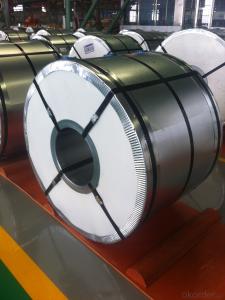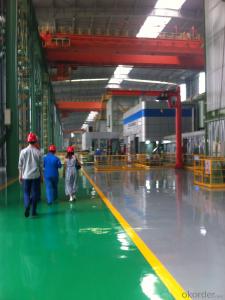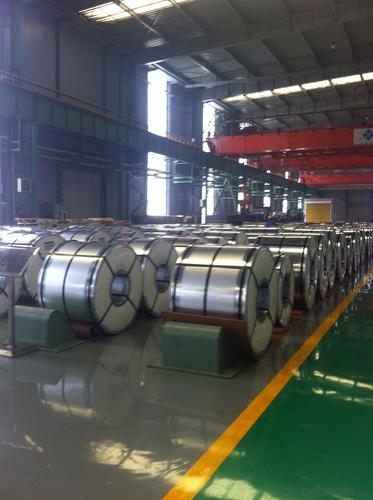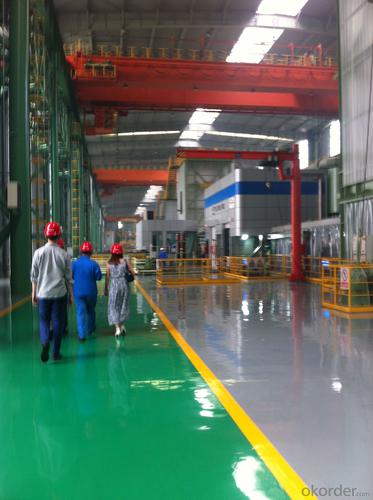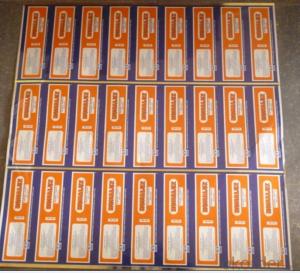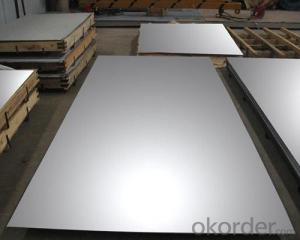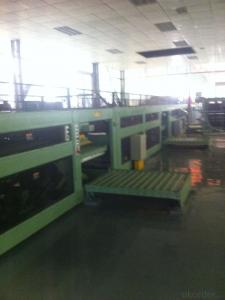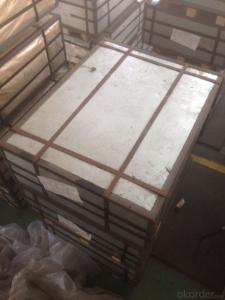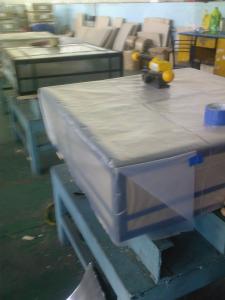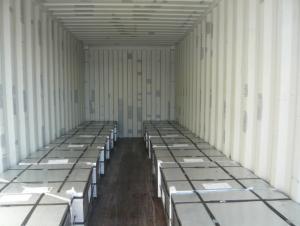Prime Quality Tinplate Sheets for 0.22mm
- Loading Port:
- Tianjin
- Payment Terms:
- TT OR LC
- Min Order Qty:
- 50 m.t.
- Supply Capability:
- 5000 m.t./month
OKorder Service Pledge
OKorder Financial Service
You Might Also Like
1.Structure Description
Electrolytic Tinplate Sheets is one of the metal packing materials, which is widely used for making painting cans ,chemical package cans , electrical cable ,battery and metal printing etc.
2. Main Features
Steady and high quality
Fast shipment
Good experience for export work
For the surface, Plate uniform in thickness,uniform and smooth tin coating, without flaws,rusts,scratch,wave,nick of tin coating etc.
Price competitive
3.Images
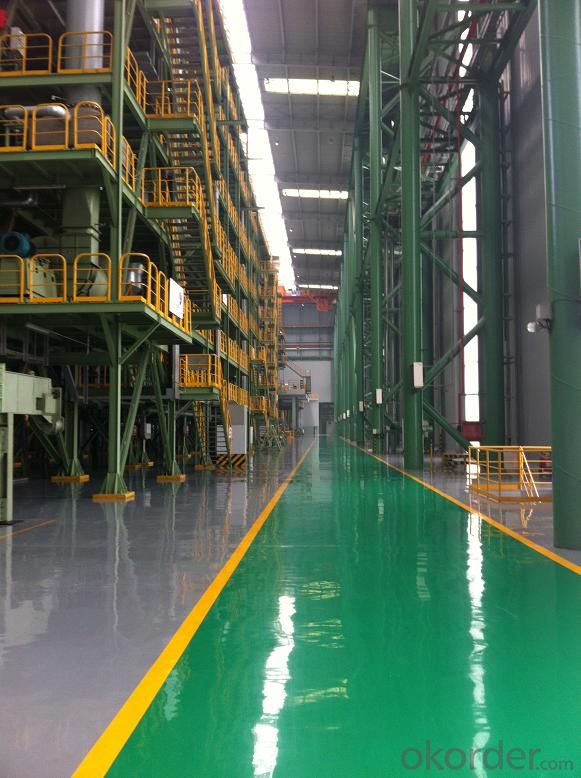
4. Specification
Standard : GB2520-2000 ,JIS G3303
Steel type : SPCC,MR
Coating : 2.8/2.8
Surface: Bright, Stone ,
Thickness:0.22
Width :600MM~1000MM
Temper : T1~T5,DR8
Package: tinplate wrapped completely with an inner cover of plastic or waterproof papers with vorners protected with metal angels.
5.FAQ
A. What is the package of tinplate? (Referred as below)
For sheets, thin plastic film + rust-proof paper + metallic cover + metallic angles+ steel band strips + fumigated wooden pallet.
For coil, thin plastic film + rust proof paper + metallic cover + steel band strips + fumigated wooden pallet
B. The surface of tinplate could you supply?
Stone finish, Bright finish, Matte finish, Silver finish
C. What quantity is the minimum order of tinplate?
Usually, the minimum quantity is 25MT. For special case, consult with us.
D. Can it make to be BA or CA for annealing?
Yes, both can do with.
E.Do you have other tin coating?
Yes, we can do with E2.8/2.8, E5.6/5.6,D2.8/5.6 etc.
- Q: What are the main applications of tinplate in the telecommunications industry?
- Tinplate has several main applications in the telecommunications industry, including the production of high-frequency cables and connectors, as well as the shielding of electronic components. Due to its excellent conductivity and corrosion resistance, tinplate is widely used in telecommunications infrastructure to ensure reliable signal transmission and protect sensitive equipment from electromagnetic interference.
- Q: What are the advantages of using tinplate?
- Some of the advantages of using tinplate include its high strength and durability, excellent corrosion resistance, and its ability to be easily formed and shaped. Tinplate also provides a barrier against oxygen, moisture, and light, making it ideal for packaging food and beverages. Additionally, tinplate is recyclable, making it a sustainable choice for packaging materials.
- Q: How is tinplate coated to prevent corrosion?
- Tinplate is coated to prevent corrosion through a process called electrolytic tinning. In this process, a thin layer of tin is electroplated onto the surface of the tinplate, creating a barrier between the metal and its environment. This tin coating acts as a sacrificial layer, which means that it corrodes instead of the underlying metal. This protective coating helps to prevent the tinplate from rusting and extends its lifespan.
- Q: How to distinguish galvanized plate and tin plate
- The zinc plating on the galvanized sheet has no grain on the surface of the galvanized sheet under the optical microscope. Drip water on galvanized sheet can form more spreading water droplets, while on tin plate, water drops will shrink rapidly.
- Q: How does tinplate perform in terms of stackability?
- Tinplate performs exceptionally well in terms of stackability. Its rigid and durable nature allows for easy stacking without compromising the structural integrity of the stack. Additionally, the smooth surface of tinplate ensures that stacked items do not shift or slide, further enhancing its stackability.
- Q: What are the different ways to seal tinplate containers?
- There are several different ways to seal tinplate containers, including using a metal lid with a rubber gasket, using a plastic or paper lid with a heat-sealed lining, using a twist-off cap with a tamper-evident seal, and using a peel-off foil seal.
- Q: What are the main differences between tinplate and tin-free steel?
- Tinplate and tin-free steel differ primarily in the presence or absence of tin coating on the surface. Tinplate refers to steel sheets or strips coated with a thin layer of tin, providing corrosion resistance and enhancing the appearance. In contrast, tin-free steel is steel that lacks this tin coating but may have other protective coatings, such as chrome or organic materials, to prevent rust and improve durability.
- Q: Can tinplate be used for outdoor applications?
- Yes, tinplate can be used for outdoor applications. Tinplate is a popular material for outdoor use due to its corrosion resistance and durability. It is commonly used in outdoor products such as cans, containers, and packaging for various purposes.
- Q: What are the main factors influencing the growth of the tinplate market?
- The main factors influencing the growth of the tinplate market include the increasing demand for packaged food and beverages, growth in the industrial sector, rising urbanization, and technological advancements in tinplate manufacturing. Additionally, the shift towards sustainable and recyclable packaging materials is also driving the growth of the tinplate market.
- Q: What are the main quality standards for tinplate?
- The main quality standards for tinplate include thickness, coating weight, surface finish, and adhesion. These standards ensure that tinplate meets the required strength, corrosion resistance, and aesthetic properties necessary for its various applications such as food packaging and industrial uses.
Send your message to us
Prime Quality Tinplate Sheets for 0.22mm
- Loading Port:
- Tianjin
- Payment Terms:
- TT OR LC
- Min Order Qty:
- 50 m.t.
- Supply Capability:
- 5000 m.t./month
OKorder Service Pledge
OKorder Financial Service
Similar products
Hot products
Hot Searches
Related keywords
